Price: Starts from ₹ 76,000
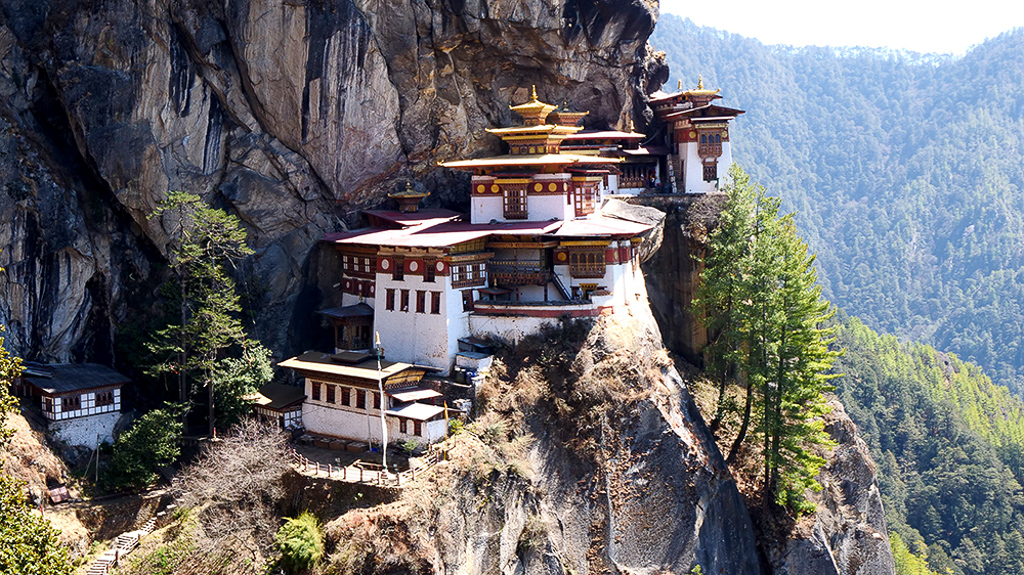
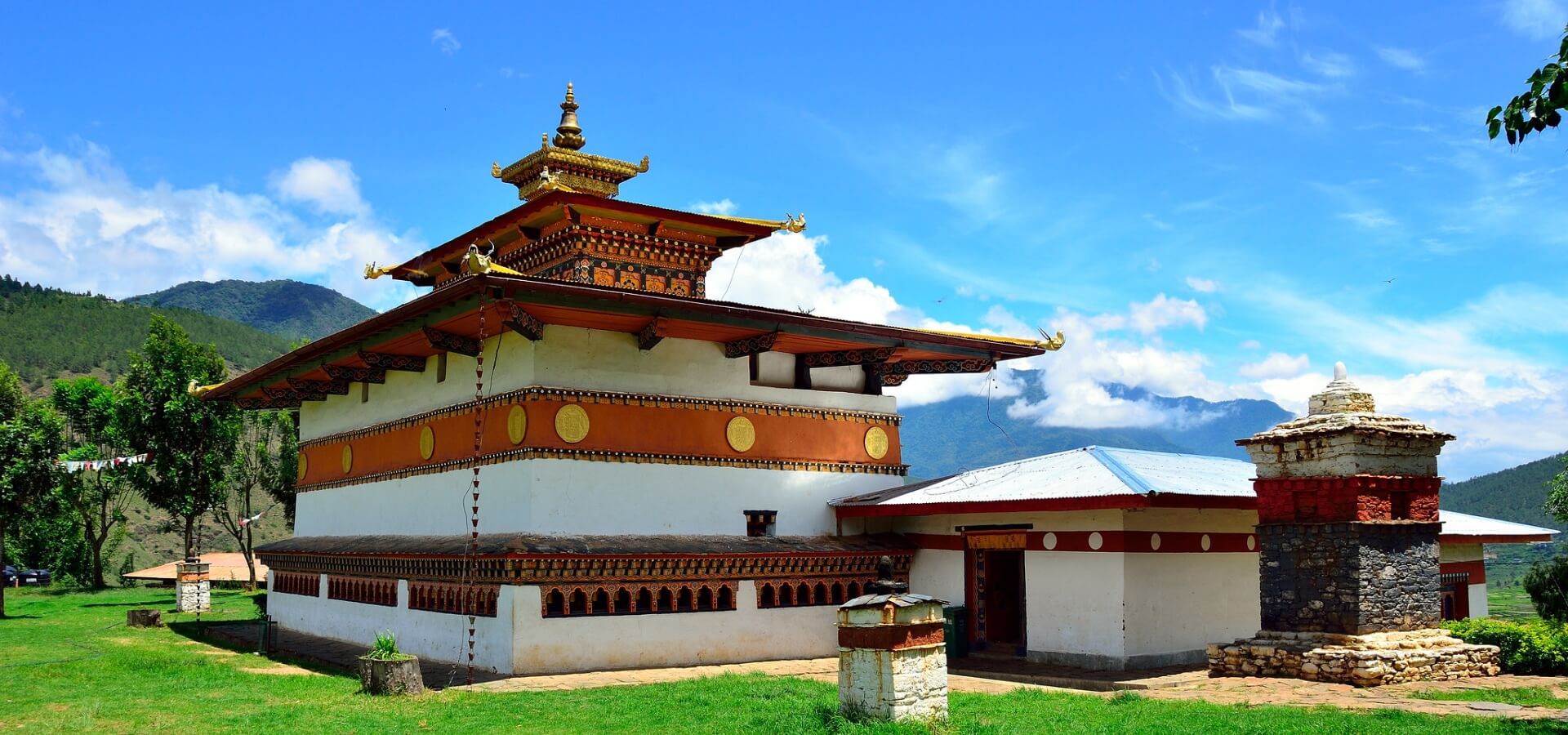
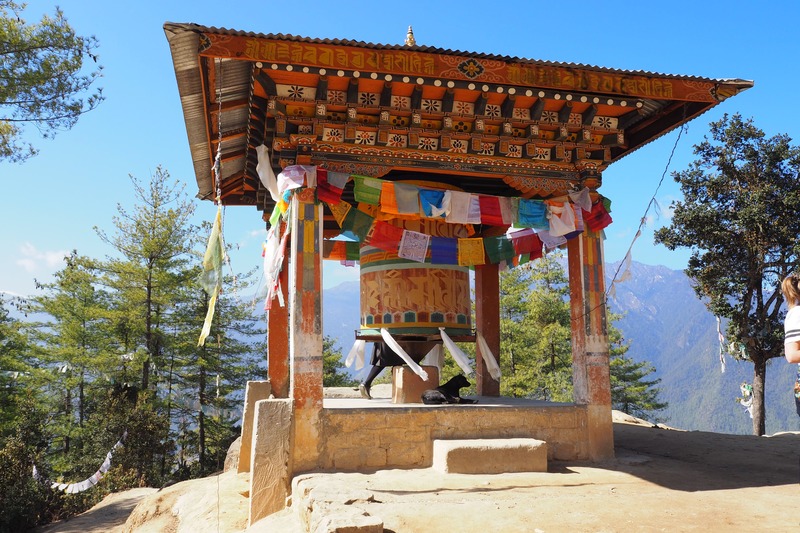
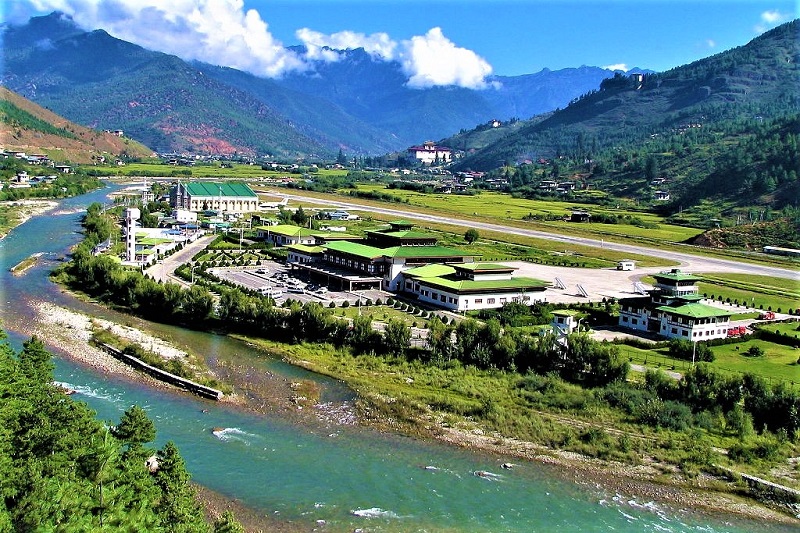
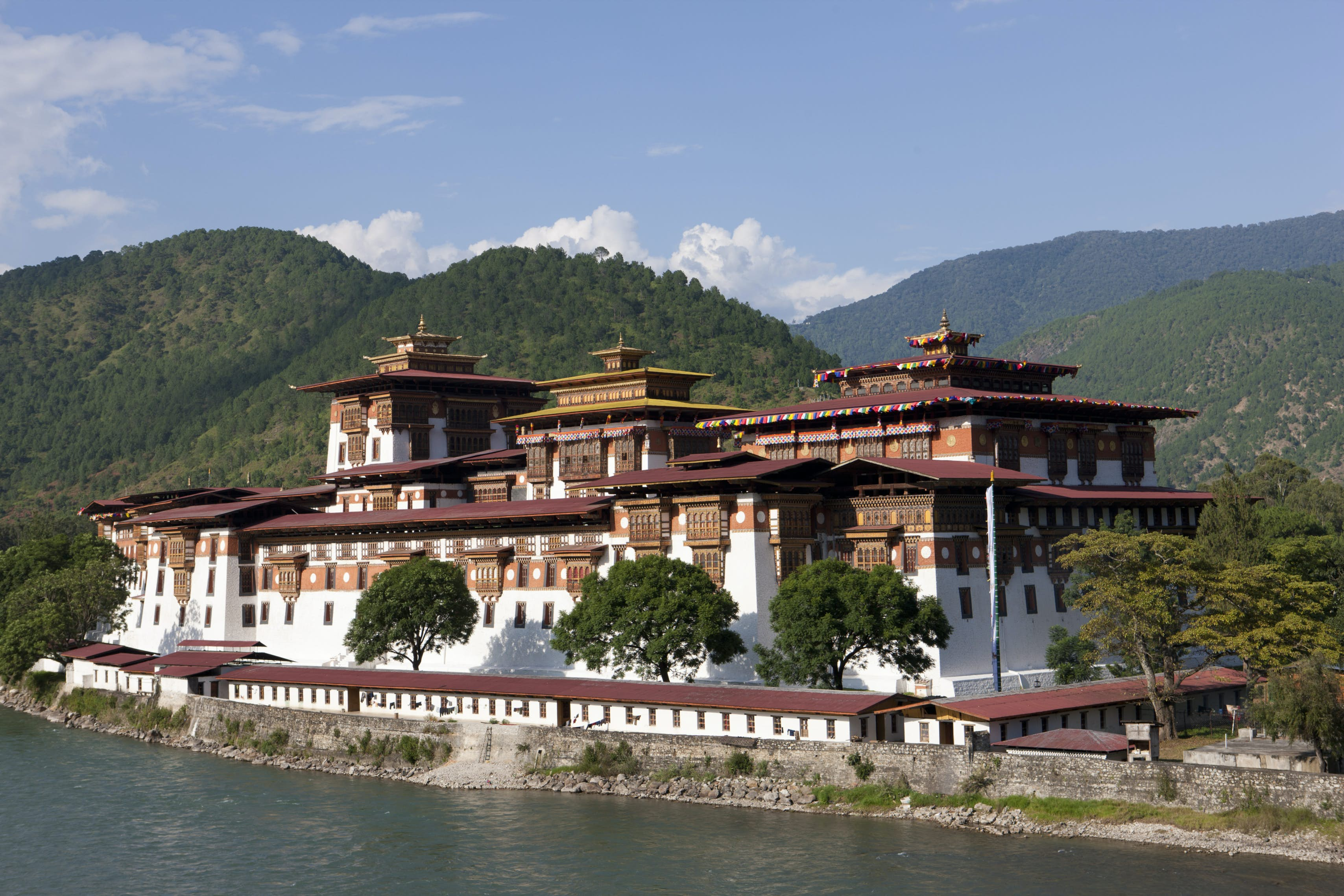
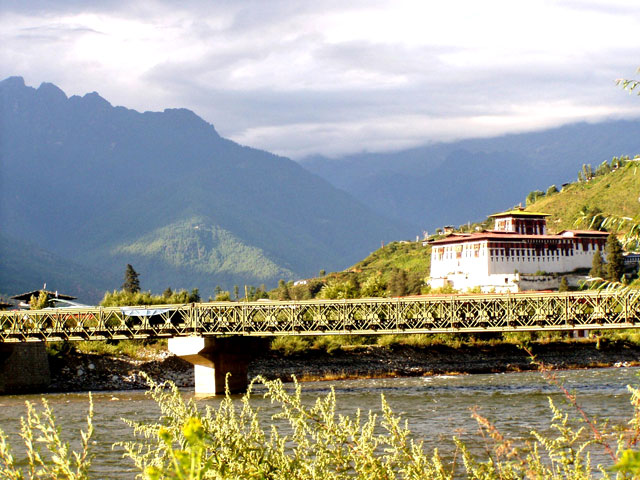






| Departure Dates | 2025: JAN 16, 30. FEB 13, 27. MAR 13, 27. APR 3, 10, 24. MAY 8, 15, 22. JUN 2, 19 . JUL 10, 24. AUG 14, 28. SEP 11, 18. OCT 7, 16, 30. NOV 6, 20, 27. DEC 4, 11, 18. 2026: JAN 15, 29. FEB 12, 26. MAR 12, 26. APR 9, 23. MAY 7, 21. JUN 4, 18. JUL 9, 23. AUG 13, 27. SEP 10, 24. OCT 1, 15, 22, 29. NOV 12, 26. DEC 3, 17. |
|---|---|
| Tour Code | BLH |
| EX | Bengaluru |
| Vehicles Used | Reserved Vehicle |
| Duration | 7 Nights / 8 Days |
| States/Countries Visited | Bhutan |
| Places Visited | Phuentsholing, Punakha, Paro, Thimphu |
| Best Time To Visit | All season |
THIMPHU CITY
Thimphu is the capital city of Bhutan where mountains speak peaceful music with nature. Not only being magical with Buddhist culture but lots of places to visit in Thimphu makes it a favorite spot for travelers. Taking down the roads in Bhutan, you can enjoy both western and traditional Bhutanese culture.
PARO DZONG
Rinpung Dzong, sometimes referred to as Paro Dzong, is a large dzong - Buddhist monastery and fortress - of the Drukpa Lineage of the Kagyu school in Paro District, Bhutan. It houses the district Monastic Body as well as government administrative offices of Paro Dzongkhag
PUNAKHA DZONG
The Punakha Dzong, also known as Pungthang Dewa chhenbi Phodrang, is the administrative centre of Punakha District in Punakha, Bhutan. Constructed by Ngawang Namgyal, 1st Zhabdrung Rinpoche, in 1637–38, it is the second oldest and second-largest dzong in Bhutan and one of its most majestic structures
TAKSANG
Paro Taktsang, is a sacred Vajrayana Himalayan Buddhist site located in the cliffside of the upper Paro valley in Bhutan. It is one of thirteen Tiger's Nest caves in historical Tibet in which Padmasambhava practiced and taught Vajrayana
PHUENTSHOLING
Phuntsholing, also spelled as Phuentsholing, is a border town in southern Bhutan and is the administrative seat of Chukha District. The town occupies parts of both Phuentsholing Gewog and Sampheling Gewog
Accommodation on twin / Triple sharing basis in 3* & 4* category in Bhutan heritage & traditional look with Taxes and Service Charges
Reserved vehicle for sightseeing with toll, parking & taxes.
Beautifully illustrated Itinerary.
Breakfast & Dinner on a fixed menu basis with taxes .
Permit.
Sustainable Development Fees for stay in Bhutan .
Complimentary insurance .
Entrance tickets to monuments and museums.
Personal expenses.
Services not specifically stated in the itinerary .
5% GST.
Any meals (Lunch, tea, snacks, etc.) not Specifically mentioned in Include Section of the Bhutan Tour
TCS applicable as per Government rules.
Bengaluru - Bagdogra - Bengaluru Air Tickets
Complimentary insurance is up to 80 years of Age and Above 80 years insurance premium will as per the insurance company policy
Alcoholic or Non Alcoholic beverages
NOTE: This tentative itinerary is for your reference only. The final itinerary will be issued only after the confirmation of Air tickets/Hotel Bookings.
Rate valid for Indian Passport holders only
Airfare approximetaly ₹ 16,000/-
Insurance is complimentary and Adigas Yatra is only the service provider, and all claims and settlements will be settled by the Insurance company as per IRDAI rules and regulations.
Do’s and Don’ts Rules and Regulations
for Bhutan
Immigration process: All Indian tourists will have to acquire a
permit to enter Bhutan and the immigration formalities are quite
strict in the country. The immigration office is at Phuentsholing, and the
ideal time to acquire the permit will take 2/3 hours. However it will also
depend on the rush available on that particular day and also the pending
permits issued from the previous day, so it might take a maximum of 5 hours
too. Without acquiring these permits, tourists will not be allowed to travel
ahead of Phuentsholing as they are checked at about 3 check posts on the way.
Smoking: Bhutan has strictly banned smoking in the country and
anybody caught smoking or carrying cigarettes will have to suffer heavy
penalties at the hands of the Royal Bhutan Police (RBP). Drinking
however is allowed but misdemeanors and erratic behavior after drinking and
that too at public places will be considered an offense.
Local Timings: The Bhutan Standard Time is half an hour
ahead of Indian Standard Time (e.g: if it is 5.30 pm in India then it
is 6.00 pm in Bhutan) and all the timings
in Bhutan whether office, restaurant, or sightseeing spots opening and
closing times are according to BST.
Indian Food: Although the cooks are learning, most of them in the
hotels are not well accustomed to Indian food items so the taste of the same
food items in India to that made in Bhutan may be different. Also, chapatis
and rotis, etc. may not be up to the standard expected all the time.
Bhutanese Dish: People in Bhutan usually have sparse
meals compared to Indian meals. The traditional dishes are usually made with
cheese (yak or cow milk) and chilies. It would be advisable to observe caution
if your palette does not agree with spicy food or if you are lactose intolerant.
However, rest assured the traditional Bhutanese is much healthier
than average Indian cuisine.
Sweet Dish: Bhutan traditionally has no system of having any
dessert items after meals. So expect to find tinned fruits or tinned rasgullas
etc only for dessert most of the time. Also, the items in dessert usually will
be less in quantity since these tinned items are imported from India or other
foreign nations and they are very high priced.
Language: The Bhutanese people ideally know these four
languages: Dzongkha, Nepali, English and Hindi. Thanks to Television,
people are learning Hindi well nowadays although they are not yet well versed, most Bhutanese folks will be able to answer you in English at
least.
People: Bhutan is comparatively a laid-back country and the
people there are happy with what they have. The hospitality industry has picked
up pace in recent years but the efficiency level may not be similar
compared to the rest of the world. So while dealing with any hotel/restaurant
staff or shopkeepers etc please try to maintain patience as they may be slow in
their work but will ultimately get the work done.
Roads: The road conditions are comparatively good
throughout Bhutan except for the roads to Punakha and Bumthang.
However, Bhutan being a fully hilly country, expects the roads to have
twists and turns throughout; so the people who have travel sickness or
vomiting tendencies during travel are requested to take caution.
Traffic: The traffic rules are very strict and the drivers always
have to maintain a strict speed limit. As such, the tourists are requested to
maintain timings as suggested by the tour leaders and guides during the tour to complete all the sightseeing and reach each destination within time.
Also, you have to expect a few yards to reach the sightseeing spots, as the
vehicles will be able to take you only to the allowable points or parking spaces.
Taktshang Monastery: This is one of the most popular sightseeing
spots in Bhutan and is located atop a hill. However, to reach it, one
has to hike for about 2-3 hours up and about 2 hours down (so people with
arthritis, heart, and breathing problems and senior citizens are advised to observe
caution and if possible refrain from going on this hike).
En route Tea/ Coffee: The traditional tea/ coffee
at Bhutan is essentially buttered tea (suja) which would not always
suit the Indian stomachs. There usually are not many proper traditional tea
shops in Bhutan so do not expect to find many on the way either. Also
too many unscheduled halts on the way would mean missing out on some
sightseeing spots. It is suggested therefore to have the tea/ coffee
offered every evening at the hotel where you shall be staying.
Shopping: During your tour, you will have the option of visiting the
markets at Thimphu and Paro. You will find more traditional items at the market
at Paro while you can also visit the handicraft market at Thimphu provided you
were able to finish the rest of the sightseeing spots before. However, most of
the goods are either imported or hand-made, so in comparison to many markets in
India, the products will be high priced, in addition, the shopkeepers do not
bargain much.
En route washrooms: The population of Bhutan is very much
less as compared to India so most of the roadways connecting the different
districts (dzongkhags) will seem to be deserted but full of natural sceneries.
As such, there are not many washrooms en route, and even if they do exist, they
are not well maintained because there are not enough people there to act as
caretakers. There are however washrooms at the en-route lunch sites and
sightseeing spots that you shall visit. You are therefore advised to consult
the guide in advance to negate any discomfort during your travel.
Dress Code: Bhutan is a Buddhist country and most of the
sightseeing spots have some or the other religious significance. Also since the
overall outlook of Bhutan is conservative, there are some dress codes
to be followed at certain sightseeing spots. Likewise In some Religious places
like monasteries, Dzongs, etc, you are not allowed to wear a Cap/Sunglasses/Half-sleeved shirt/t-shirt with a round neck. If it is half sleeves, then it should have
having collared neck, and if it is a round neck, then it should have full sleeves. For
more information, guests are advised to consult the Guide/Driver at the start of
the day’s sightseeing to avoid any confusion later.
1 water bottle per day
| Departure Dates | 2025: JAN 16, 30. FEB 13, 27. MAR 13, 27. APR 3, 10, 24. MAY 8, 15, 22. JUN 2, 19 . JUL 10, 24. AUG 14, 28. SEP 11, 18. OCT 7, 16, 30. NOV 6, 20, 27. DEC 4, 11, 18. 2026: JAN 15, 29. FEB 12, 26. MAR 12, 26. APR 9, 23. MAY 7, 21. JUN 4, 18. JUL 9, 23. AUG 13, 27. SEP 10, 24. OCT 1, 15, 22, 29. NOV 12, 26. DEC 3, 17. |
|---|---|
| Tour Code | BLH |
| EX | Bengaluru |
| Vehicles Used | Reserved Vehicle |
| Duration | 7 Nights / 8 Days |
| States/Countries Visited | Bhutan |
| Places Visited | Phuentsholing, Punakha, Paro, Thimphu |
| Best Time To Visit | All season |
| Category | Price |
|---|
THIMPHU CITY
Thimphu is the capital city of Bhutan where mountains speak peaceful music with nature. Not only being magical with Buddhist culture but lots of places to visit in Thimphu makes it a favorite spot for travelers. Taking down the roads in Bhutan, you can enjoy both western and traditional Bhutanese culture.
PARO DZONG
Rinpung Dzong, sometimes referred to as Paro Dzong, is a large dzong - Buddhist monastery and fortress - of the Drukpa Lineage of the Kagyu school in Paro District, Bhutan. It houses the district Monastic Body as well as government administrative offices of Paro Dzongkhag
PUNAKHA DZONG
The Punakha Dzong, also known as Pungthang Dewa chhenbi Phodrang, is the administrative centre of Punakha District in Punakha, Bhutan. Constructed by Ngawang Namgyal, 1st Zhabdrung Rinpoche, in 1637–38, it is the second oldest and second-largest dzong in Bhutan and one of its most majestic structures
TAKSANG
Paro Taktsang, is a sacred Vajrayana Himalayan Buddhist site located in the cliffside of the upper Paro valley in Bhutan. It is one of thirteen Tiger's Nest caves in historical Tibet in which Padmasambhava practiced and taught Vajrayana
PHUENTSHOLING
Phuntsholing, also spelled as Phuentsholing, is a border town in southern Bhutan and is the administrative seat of Chukha District. The town occupies parts of both Phuentsholing Gewog and Sampheling Gewog
| Day 1: Bengaluru - Bagdogra - Phuentsoling |
|---|
| Departure to Bagdogra from Bengaluru airport. After arriving at Bagdogra Airport, Our representative will meet & greet you at the airport and transfer to Phuentsholing, on arrival in Phuentsholing check into the hotel and relax. Phuentsholing- Phuentsholing is the border point for any goods and services entry/exit into Bhutan. Phuentsholing lies opposite the Indian town of Jaigon and cross-border trade has resulted in a thriving local economy. Zangto Pelri Lhakhang: It is a small temple located in the heart of the Phuentsholing town. The temple's soothing premises also serve as a park, a good place to relax for both locals and tourists. Elderly citizens come to circumambulate around the temple. Overnight in Phuentsholing, altitude of 300m |
| Day 2: Phuentsholing - Thimphu (5 Hrs Drive) |
| Complete the immigration formalities before starting the journey to Thimphu, the immigration office opens at 9 AM. The feeling of being exhausted and crowded in Phuentsholing comes to an end after half an hour's drive uphill, you will start feeling fresh and enjoy the scenic beauty of nature. The journey will pass through some of the most beautiful broad leaves forests to temperate alpine zones, villages, towns, waterfalls, hills, and mountains until we reach Thimphu, creating history for you. Roadside Stops Leg stretch breaks for having Tea/coffee, using the restroom, and taking photographs at scenic places like waterfalls, landscapes, and villages. Chuzom - Meeting point of two rivers (Thimphu & Paro) this is a tri-junction of highway leading to Thimphu, Paro, and Phuentsholing in three directions. Enjoy the lovely picture of a beautiful portrait of our King and Queen placed at Chuzom which is so welcoming to all who visit Bhutan. We will explore the city by walking: If time permits, walking through the city gives you immense joy and understanding of the modern city. A good option for imported garments and local souvenirs, besides unique local handicrafts. Thimphu offers a mixed style of personalities taking the street walk in Thimphu- the only city in the world without traffic lights. Overnight in Thimphu, altitude of 2400m |
| Day 3: Thimphu |
| Thimphu- This bustling little city is the main center of commerce, religion, and government in the country. Thimphu is the most modern city with an abundance of restaurants, internet cafes, nightclubs, and shopping centers. However, it still retains its cultural identity and values amidst the signs of modernization, often referred to as world only city without traffic lights. Folk Heritage Museum: This museum was established in 2001 and provides visitors with fascinating insights into the Bhutanese material culture and way of life, especially the life of Bhutanese in remote parts of Bhutan. Visit Buddha viewpoint: The Buddha Dordenma is located at the top of the hill in Kuensel Phodrang Nature Park and overlooks the southern entrance to Thimphu Valley. Drive pass by Memorial: It is located close to the center of Thimphu city and is one of its most iconic monuments. Visitors will find elderly Bhutanese people circumambulating the Chorten throughout the day. The National Memorial Chorten was built in memory of the Late Third King of Bhutan and dedicated to World Peace. The third King is regarded as the father of modern Bhutan. Visit the interesting weekend market: An interesting well well-organized permanent set of stalls built for vegetable vendors across the country. It’s open from Wednesday to Monday and closed on Tuesdays. One can find a wide range of local vegetables and fruits. Witness ongoing live archery matches in Changlimithang: Archery is the national game of Bhutan, and it is amazing to see Bhutanese archers hitting targets from a distance of 145 meters range. Bhutan has top archers in some categories in the Olympic Games. Overnight in Thimphu |
| Day 4: Thimphu - Punakha (2hrs) |
| Start the most scenic drive to Punakha from Thimphu over Dochula Pass which takes about two hours. After the break at Dochula, the road descends into Wangdue and Punakha taking us to one of the warmest places in Bhutan. Dochula Pass: The pass is at a popular location as it offers a stunning 180 - degree panoramic view of the Great Himalayan mountain ranges. The view is especially scenic and very clear on winter days with snowcapped mountains forming a majestic backdrop to the tranquility of the 108 chortens gracing the mountain pass. Punakha Dzong Built-in 1637 by Zhabdrung Ngawang Namgyal, the Dzong was named Druk Pungthang Dechen Phodrang (Palace of Great Happiness). Punakha is still the winter residence of Je-Khenpo religious head of Bhutan. King Jigme Dorji Wangchuck convened the first National Assembly here in 1952. This is one of the finest and must-see Dzongs of Bhutan. The Dzong stands in between the meeting point of two rivers, Phochu and Mochu making the most photogenic Dzongs of Bhutan. Visit Punakha Suspension Bridge: Punakha Suspension Bridge is considered one of the longest of its kind in Bhutan. The bridge connects the dzong with the villages Shengana, Samdingkha, and Wangkha on the other bank of the Po Chhu River. In these small villages, locals sell their wares in tiny, traditional shops. Visitors can stop here for a quick and authentic view of true Bhutan. To access the suspension bridge from the dzong, one must walk past the King’s palace and the cremation ground. Overnight in Punakha, altitude of 1350m |
| Day 5: Punakha To Paro (3 Hrs Drive) |
| As we proceed to Paro, we will retrace the journey crossing over Dochula, up until Chuzom, and further to Paro. The entire stretch of the drive will refresh your mind and give you a second chance to enjoy the great snowcapped mountain views of the Himalayas from Dochula. Chimi Lhakhang, Temple of fertility: This temple is known as the temple of fertility. It is widely believed that childless couples can visit this temple to pray for better fertility to conceive a child. There are stories and incidences in which many visitors' dreams came true however one truly needs to believe and follow the lama’s instruction. The hike through the lovely villages of Mesina gives a truly amazing experience. Enjoy the gentle walks from the road ahead. Visit 17th century Paro Dzong 'Fortress on a Heap of Jewels’, which is ranked one of the best Bhutanese architecture. The massive buttressed walls that tower over the town are visible throughout the valley, particularly when landing at Paro Airport. The Dzong also offers an administrative seat in the district of Paro. The Dzong was built in 1644 under the order of Zhabdrung Ngawang Namgyal. Ta Dzong unique national museum: Perched above Paro Dzong it was a watchtower built in 1649 to protect the undefended Paro Dzong located below, renovated in 1968 to house the National Museum. Today this museum houses the best collections of all-time historical items making it worth a visit. Explore the tiny town: Tiny Paro town actually can offer a lot more, there are many authentic handicraft shops, readily available Bhutan made products, and grocery and imported garment shops besides having many small restaurants around. Overnight in Paro, altitude of 2200m |
| Day 6: Paro |
| This picturesque region in the kingdom is covered in fertile rice fields and has a beautiful, crystalline river meandering down the valley. Paro has more historical sites, high end tourist resorts, and many souvenir shops for shopping including the world famous Takstang. Taktsang Monastery (Tiger Nest Temple): is Bhutan’s most iconic landmark and religious Buddhist site in the world. The name Taktsang translates to “The Tiger’s Nest”. The temple is one of the holiest sites in Bhutan which clings impossibly to a sheer cliff face 900 meters above the valley. Although good trekkers can make it to the top in two hours, most of the guests take a whole day to complete the hike. Kyichu Lhakhang: Temple considered sacred Jewel of Bhutan was established by the Buddhist King Songstsen Gampo of Tibet to overcome the giant ogress that laid across Tibet and the Himalayas preventing the spread of Buddhism. The king is believed to have built the temple at the left foot of the enormous ogress. Kyichu Lhakhang was among 12 temples in Bhutan out of 108 temples said to have been constructed over a single night. Kyichu Lhakhang was initially small in size however later, the temple expanded both in grandeur and size to the form that we see today. Overnight in Paro |
| Day 7: Paro - Phuentsholing - Siliguri (7-8hrs) |
| After the breakfast, drive back to Phuentsholing. Phuentsholing is also good for buying inexpensive Bhutanese souvenirs and agro products for your relatives back home. Prepare yourself to exit from Bhutan. Roadside Stops Leg stretch breaks for having tea/coffee, using the restroom, and taking photographs at scenic places like waterfalls, landscapes, and villages. Kharbandi Gompa (based on your interest)The monastery was built by Royal Grandmother in 1967. It is located on a picturesque hill overlooking the whole Phuentsholing town and beyond the Torsa River far into the distance till the sight disappears into a mountain. The site serves as an idle place to take photos of the town and the mountains acting as a perfect background. On arrival at the Phuentsholing India border, Change to the Indian Vehicle for the Journey to Siliguri. Night halt at Siliguri |
| Day 8: Siliguri - Bagdogra - Bengaluru |
| After breakfast transfer to Bagdogra airport for the return journey to Bengaluru |
Accommodation on twin / Triple sharing basis in 3* & 4* category in Bhutan heritage & traditional look with Taxes and Service Charges
Reserved vehicle for sightseeing with toll, parking & taxes.
Beautifully illustrated Itinerary.
Breakfast & Dinner on a fixed menu basis with taxes .
Permit.
Sustainable Development Fees for stay in Bhutan .
Complimentary insurance .
Entrance tickets to monuments and museums.
Personal expenses.
Services not specifically stated in the itinerary .
5% GST.
Any meals (Lunch, tea, snacks, etc.) not Specifically mentioned in Include Section of the Bhutan Tour
TCS applicable as per Government rules.
Bengaluru - Bagdogra - Bengaluru Air Tickets
Complimentary insurance is up to 80 years of Age and Above 80 years insurance premium will as per the insurance company policy
Alcoholic or Non Alcoholic beverages
1 water bottle per day
NOTE: This tentative itinerary is for your reference only. The final itinerary will be issued only after the confirmation of Air tickets/Hotel Bookings.
Rate valid for Indian Passport holders only
Airfare approximetaly ₹ 16,000/-
Insurance is complimentary and Adigas Yatra is only the service provider, and all claims and settlements will be settled by the Insurance company as per IRDAI rules and regulations.
Do’s and Don’ts Rules and Regulations
for Bhutan
Immigration process: All Indian tourists will have to acquire a
permit to enter Bhutan and the immigration formalities are quite
strict in the country. The immigration office is at Phuentsholing, and the
ideal time to acquire the permit will take 2/3 hours. However it will also
depend on the rush available on that particular day and also the pending
permits issued from the previous day, so it might take a maximum of 5 hours
too. Without acquiring these permits, tourists will not be allowed to travel
ahead of Phuentsholing as they are checked at about 3 check posts on the way.
Smoking: Bhutan has strictly banned smoking in the country and
anybody caught smoking or carrying cigarettes will have to suffer heavy
penalties at the hands of the Royal Bhutan Police (RBP). Drinking
however is allowed but misdemeanors and erratic behavior after drinking and
that too at public places will be considered an offense.
Local Timings: The Bhutan Standard Time is half an hour
ahead of Indian Standard Time (e.g: if it is 5.30 pm in India then it
is 6.00 pm in Bhutan) and all the timings
in Bhutan whether office, restaurant, or sightseeing spots opening and
closing times are according to BST.
Indian Food: Although the cooks are learning, most of them in the
hotels are not well accustomed to Indian food items so the taste of the same
food items in India to that made in Bhutan may be different. Also, chapatis
and rotis, etc. may not be up to the standard expected all the time.
Bhutanese Dish: People in Bhutan usually have sparse
meals compared to Indian meals. The traditional dishes are usually made with
cheese (yak or cow milk) and chilies. It would be advisable to observe caution
if your palette does not agree with spicy food or if you are lactose intolerant.
However, rest assured the traditional Bhutanese is much healthier
than average Indian cuisine.
Sweet Dish: Bhutan traditionally has no system of having any
dessert items after meals. So expect to find tinned fruits or tinned rasgullas
etc only for dessert most of the time. Also, the items in dessert usually will
be less in quantity since these tinned items are imported from India or other
foreign nations and they are very high priced.
Language: The Bhutanese people ideally know these four
languages: Dzongkha, Nepali, English and Hindi. Thanks to Television,
people are learning Hindi well nowadays although they are not yet well versed, most Bhutanese folks will be able to answer you in English at
least.
People: Bhutan is comparatively a laid-back country and the
people there are happy with what they have. The hospitality industry has picked
up pace in recent years but the efficiency level may not be similar
compared to the rest of the world. So while dealing with any hotel/restaurant
staff or shopkeepers etc please try to maintain patience as they may be slow in
their work but will ultimately get the work done.
Roads: The road conditions are comparatively good
throughout Bhutan except for the roads to Punakha and Bumthang.
However, Bhutan being a fully hilly country, expects the roads to have
twists and turns throughout; so the people who have travel sickness or
vomiting tendencies during travel are requested to take caution.
Traffic: The traffic rules are very strict and the drivers always
have to maintain a strict speed limit. As such, the tourists are requested to
maintain timings as suggested by the tour leaders and guides during the tour to complete all the sightseeing and reach each destination within time.
Also, you have to expect a few yards to reach the sightseeing spots, as the
vehicles will be able to take you only to the allowable points or parking spaces.
Taktshang Monastery: This is one of the most popular sightseeing
spots in Bhutan and is located atop a hill. However, to reach it, one
has to hike for about 2-3 hours up and about 2 hours down (so people with
arthritis, heart, and breathing problems and senior citizens are advised to observe
caution and if possible refrain from going on this hike).
En route Tea/ Coffee: The traditional tea/ coffee
at Bhutan is essentially buttered tea (suja) which would not always
suit the Indian stomachs. There usually are not many proper traditional tea
shops in Bhutan so do not expect to find many on the way either. Also
too many unscheduled halts on the way would mean missing out on some
sightseeing spots. It is suggested therefore to have the tea/ coffee
offered every evening at the hotel where you shall be staying.
Shopping: During your tour, you will have the option of visiting the
markets at Thimphu and Paro. You will find more traditional items at the market
at Paro while you can also visit the handicraft market at Thimphu provided you
were able to finish the rest of the sightseeing spots before. However, most of
the goods are either imported or hand-made, so in comparison to many markets in
India, the products will be high priced, in addition, the shopkeepers do not
bargain much.
En route washrooms: The population of Bhutan is very much
less as compared to India so most of the roadways connecting the different
districts (dzongkhags) will seem to be deserted but full of natural sceneries.
As such, there are not many washrooms en route, and even if they do exist, they
are not well maintained because there are not enough people there to act as
caretakers. There are however washrooms at the en-route lunch sites and
sightseeing spots that you shall visit. You are therefore advised to consult
the guide in advance to negate any discomfort during your travel.
Dress Code: Bhutan is a Buddhist country and most of the
sightseeing spots have some or the other religious significance. Also since the
overall outlook of Bhutan is conservative, there are some dress codes
to be followed at certain sightseeing spots. Likewise In some Religious places
like monasteries, Dzongs, etc, you are not allowed to wear a Cap/Sunglasses/Half-sleeved shirt/t-shirt with a round neck. If it is half sleeves, then it should have
having collared neck, and if it is a round neck, then it should have full sleeves. For
more information, guests are advised to consult the Guide/Driver at the start of
the day’s sightseeing to avoid any confusion later.